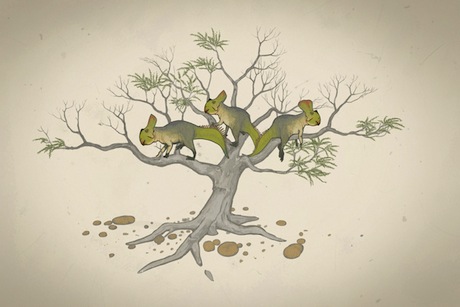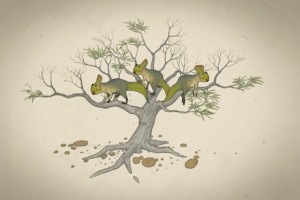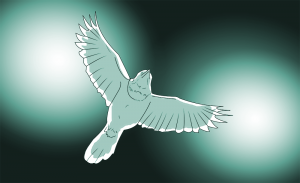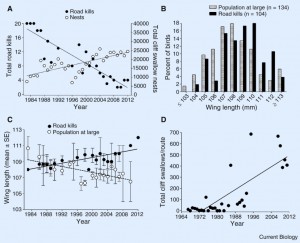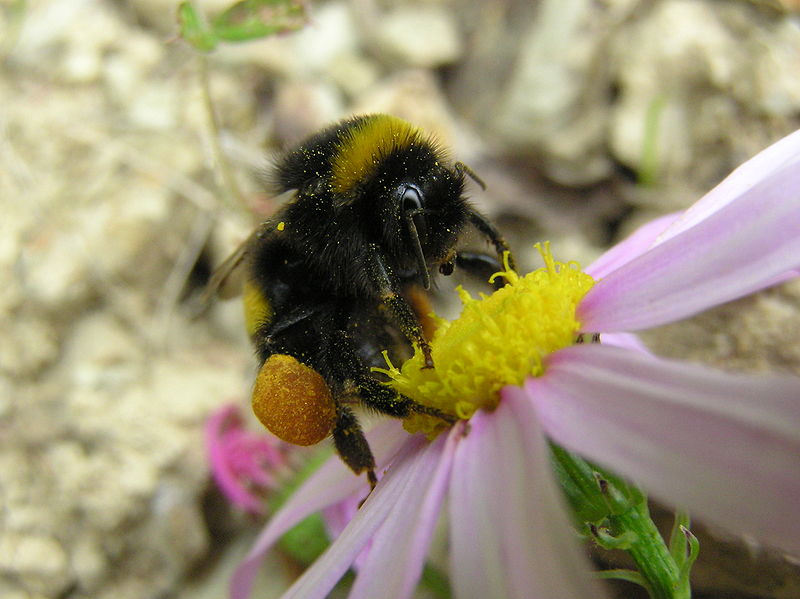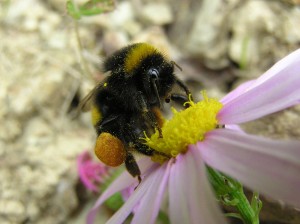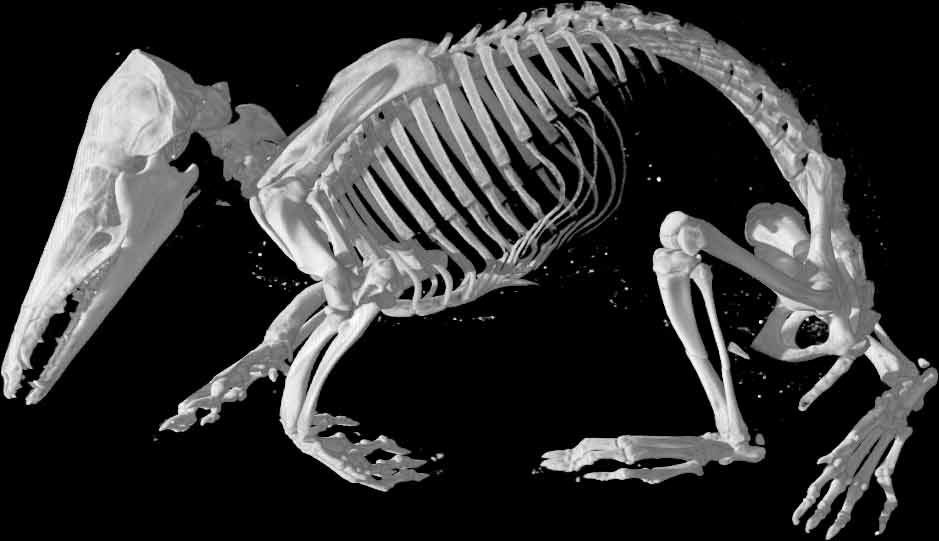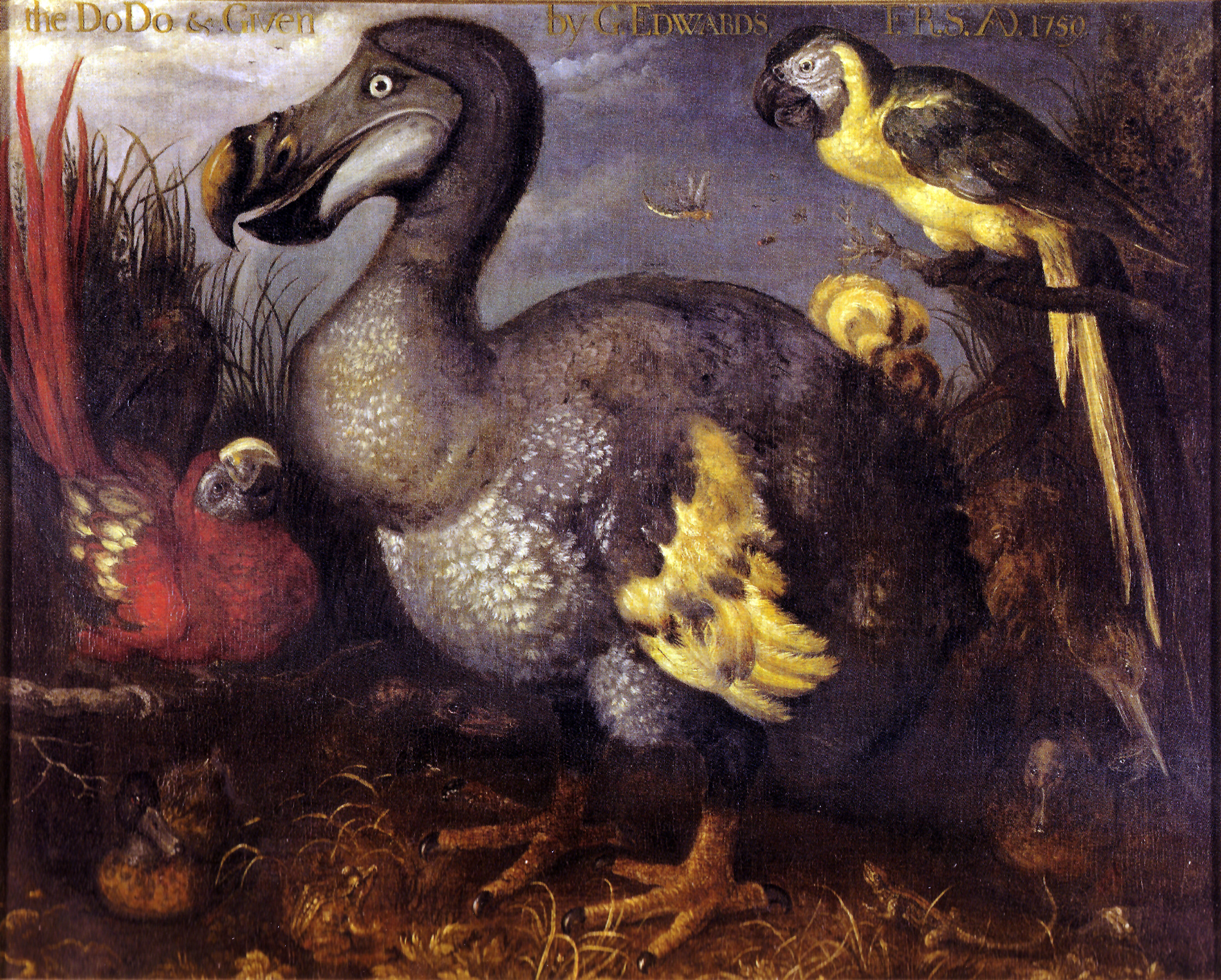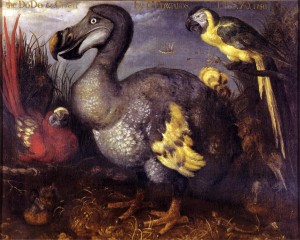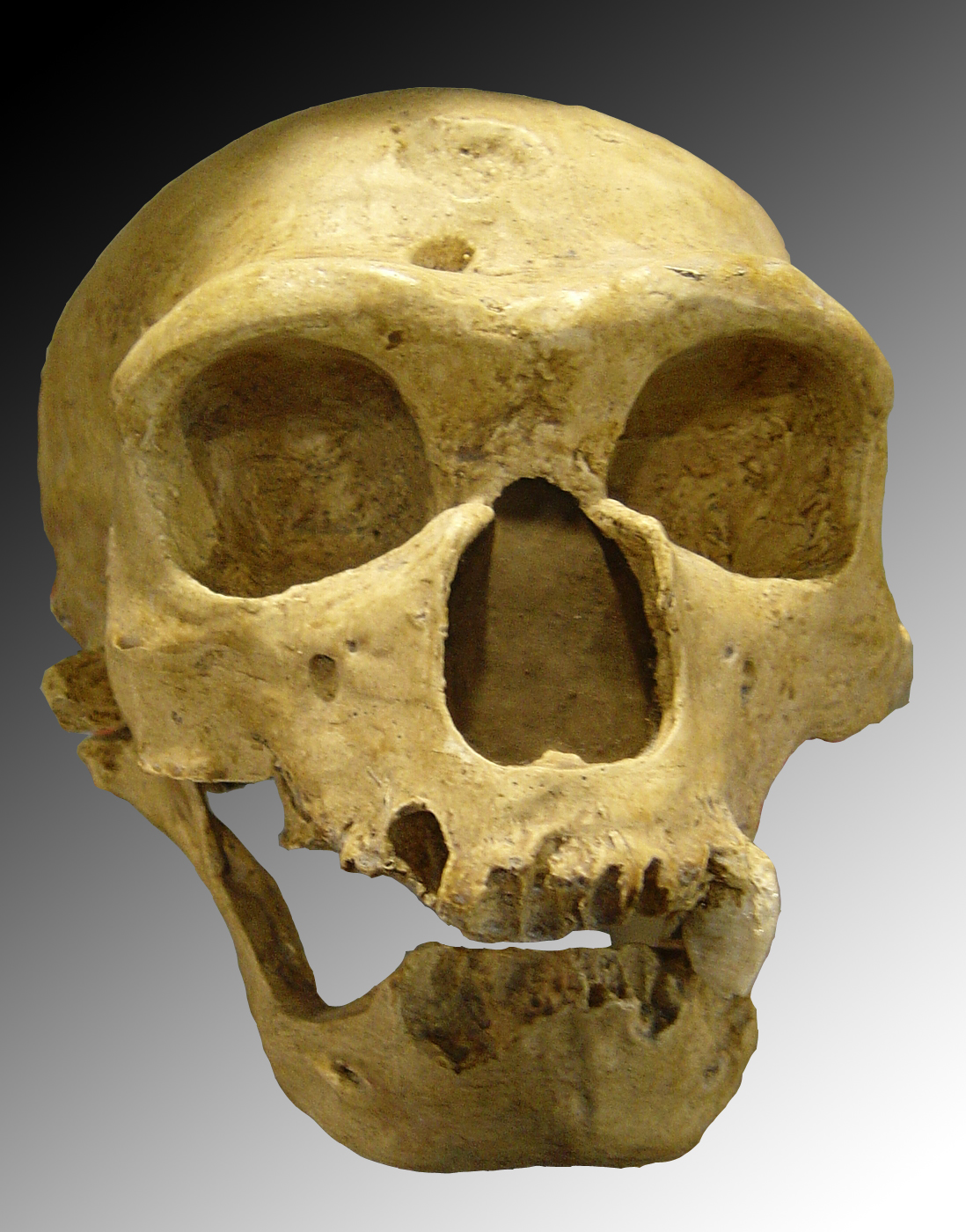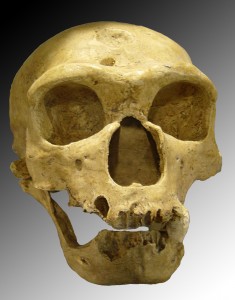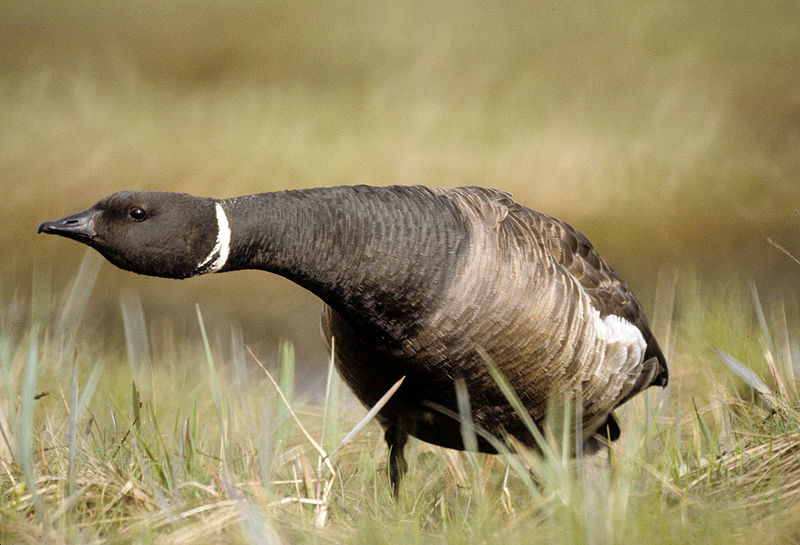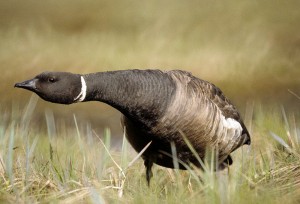Any designer will tell you that choosing the right colour combinations are essential to strike the right tone and balance in a room, particularly if your goal is to attract clients. Well, what if your room is a web and your client is a moth?
This is just the situation the rather drab and dreary coloured Cyrtophora unicolor finds itself in. These spiders live almost exclusively on large moth prey, which are attracted by pale colours and twinkling lights, a problem if your evolution has led you to optimize your “I’m a brown leaf” appearance. Enter the small but enchanting Argyrodes fissifrons (a member of the dewdrop spiders). These spiders by contrast are endowed with a glistening silver and black pattern. These little guys face a rather different dilemma: they are kleptoparasites (food thieves!), meaning that they use the web of another larger spider species for feeding and reproductive territory.
Somewhere along the lines these two species found each other and struck up what is the first recorded example of an arthropod predator mutualism based on colour. Predator mutualisms, where both species benefit from the relationship, are rare due to conflicts of interest. Most dewdrop spiders live off the webs of others and suffer high levels of aggression from the hosts (somewhat understandably!). It was noticed however that A.fissifrons and C.unicolor seemed to coexist quite happily and that webs of C.unicolor even seemed to intercept more prey when A.fissifrons was present. The reason: The twinkling silver body of A.fissifrons. Against a leafy background the silver A. fissifrons is quite conspicuous and even attractive to the primarily visually oriented Hawkmoth prey. It is thought that the moths read the silver as some kind of a cue, potentially reflecting the moonlight at a similar intensity or wavelength as the stars, used by the moths for celestial navigation. These large moths however are much to big for little A.fissifrons to tackle; they prefer the smaller “accidental” prey. The result: These two species live quite contentedly side-by-side, one providing the house and the other the decoration.
Most animals that use colour signals use them as warnings, as mating indicators, service providers (as is the case in cleaner fish), camouflage and mimicry. If your ecological and evolutionary pressures demand a more low-key and less vibrant costume, adding a splash of colour from a friend with similar interests it seems may lead to joint benefits. Co-evolutionary related colour patterns, such as those associated with mimicry, usually arise from antagonistic interactions among species so it is interesting to see examples like these and wonder whether some might also arise from, or might eventually evolve as a result of, synergistic interactions among species.
Author
Deirdre McClean: mccleadm[at]
Photo credit
wikimedia commons



